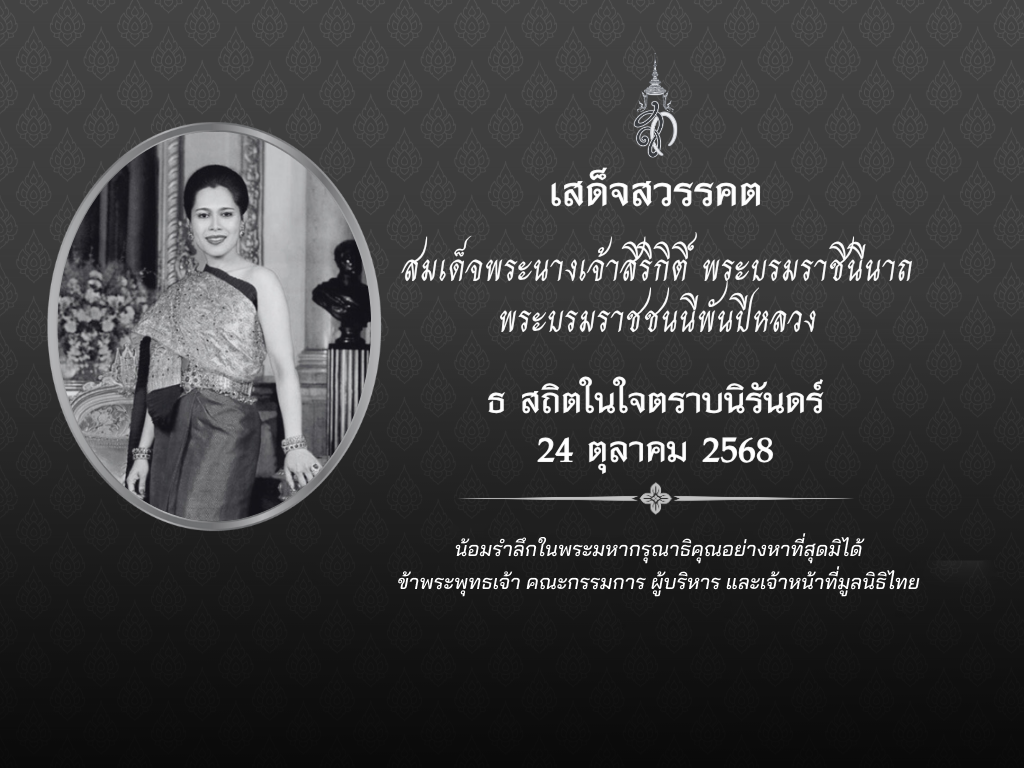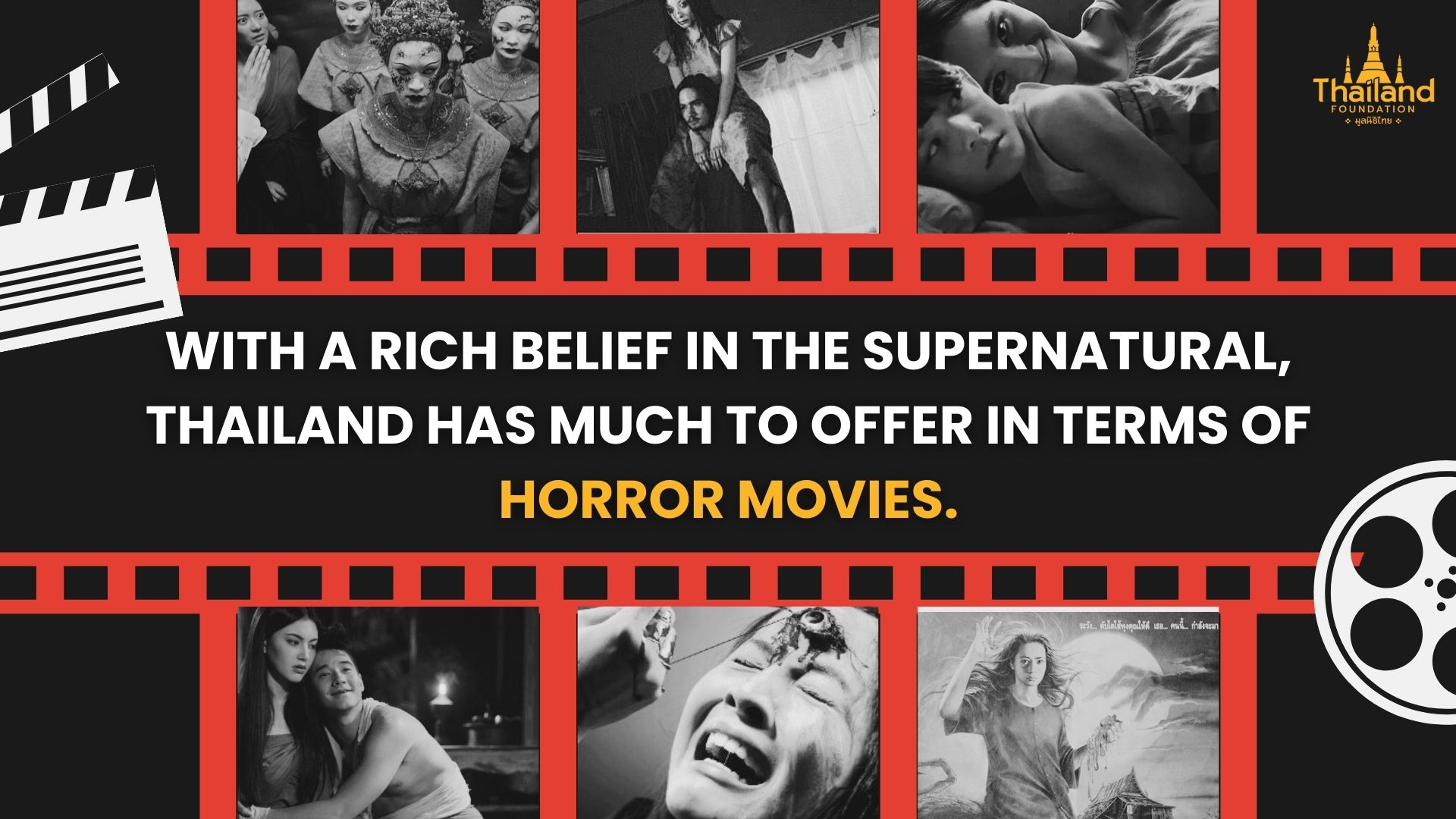
For centuries, ghost stories and tales of the supernatural have sparked the imagination of people worldwide. Thailand is no exception. Here, the fear of mysterious phenomena evolved into a rich belief system involving ghosts, spirits, and rituals that continue to shape Thai culture today, including pop culture. Thai horror films, known for being spine-chilling, have become beloved by both domestic and international audiences. More than just delivering jump scares, these films skillfully weave elements of Thai culture, social issues, and everyday struggles into their narratives, blending real-world fears with supernatural terror. This article will introduce you to the history and essence of Thai horror films, while also offering recommendations for some interesting films in the genre.
Ghosts and Spirits in Thai Culture
At the heart of Thai horror films lies a deep-rooted belief in supernatural beings, collectively known as “phi” (ผี). In Thai culture, phi is not inherently malevolent. In fact, the term phi refers to mysterious beings, ranging from ghosts to divine spirits, capable of either aiding or harming individuals. These spirits have long played a significant role in Thai culture and beliefs, influencing various aspects of the life of Thai people up until now. For example, Thai believe that every house has guardian spirits like phi baan (ผีบ้าน) and phi ruen (ผีเรือน), which protect villages and households. They are revered and often provided with shrines or spirit houses for worship. However, the darker side of phi is represented by vengeful ghosts and malevolent spirits; some are believed to feed on raw substances, including human or animal internal organs. Different regions of Thailand have their own versions of phi, each with unique characteristics but sharing a similar essence. These malevolent spirits are believed to cause harm by possessing people, leading to sickness or gruesome death. Apart from the traditional phi in local folklore, it is believed that some vengeful phis haunt places such as houses, hotels, or hospitals, and others haunt things like the beloved possession of the dead. Such evil phi is the backbone of many Thai horror narratives, making the genre an extension of the Thai spiritual worldview, where the line between the living and the supernatural is constantly blurred.
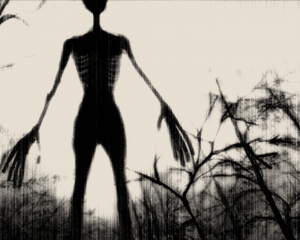
Photo Cr. thaipbs
History of Thai Horror Films
Alongside the country’s ever-changing cultural and societal values, Thai horror films or nang phi (หนังผี), literally menaing “ghost movies,” have also evolved. From oral folklore passed down through generations, the eerie tales of phi found their way into mass media, where filmmakers blended traditional beliefs with modern storytelling techniques, creating a genre that resonates with their audiences. The long history of Thai horror films dates back to the 1970s. Over the decades, the style and themes of these films have evolved, mirroring the beliefs, societal changes, and cultural attitudes of each period.
Several scholars and enthusiasts have attempted to analyze these transformations within the genre. To explore these transformations, this article presents a periodization of Thai horror films, as discussed by Asst. Prof. Dr. Sukanya Sompiboon, Deputy Dean of the Faculty of Communication Arts, Chulalongkorn University, and Dr. Thanapol Chaowanich, Lecturer of the Film and Still Photography Department, in a seminar session titled “The Importance of Ghost Films in the Thai Film Industry,” as documented in an article title “ความสำคัญ “หนังผีไทย” สู่วงการภาพยนตร์โลก [The Importance of ‘Thai Ghost Films,’ to the World Film Industry” written by Padivalada Bavornsakdi published in April 7, 20223 on SILPA-MA.com. This session, part of a broader event, “Ghosts: Various Beliefs in Thai Cultures” (ผี : นานาสาระความเชื่อในวัฒนธรรมไทย), was organized by the Fine Arts Department in 2023. The speakers discussed the eras of Thai horror films citing the book “หลอน รัก สับสน ในหนังไทย : ภาพยนตร์ไทยในรอบสามทศวรรษ (พ.ศ. 2520-2547) กรณีศึกษาตระกูลหนังผี หนังรักและหนังยุคหลังสมัยใหม่”, directly translated as “Haunted, Love, and Confusion in Thai Movies: Thai Movies in Three Decades (1977-2004) A Case Study of Horror, Romance, and Postmodern Films” written by Assoc. Prof. Kamjohn Louiyapong and Assoc. Prof. Somsuk Hinviman. From the 1970s to the present, Thai horror films can be categorized into four main periods (the first three cited directly from this book), each marked by its own distinct style and thematic focus.
The first period of Thai horror films, spanning from 1977 to 1986, is considered the era of traditional horror. Films from this period focused on local phi legends that were already well-known among Thai audiences. One of the most iconic examples is Mae Nak Phra Khanong (Miss Nak of Phra Khanong), sometimes referred to as Nang Nak. It is a story about Nak, a devoted wife whose beloved husband, Mak, was drafted into the army while she was pregnant. Tragically, before Mak came back from the war, both Nak and their child died during childbirth, but her spirit lingered, waiting for her husband’s return. Her ghost haunted the village, silencing anyone who tried to tell Mak the truth about her death. According to the speakers, apart from Thai traditional legends and folklore, the filmmakers sometimes experimented by borrowing characters from Western legends such as Dracula in Dracula Tok (1979), a comedic parody of Dracula, interacting with Thai ghosts, krasue (กระสือ) and krahang (กระหัง). However, the limited cinematic technology of the time restricted how these supernatural stories were portrayed on screen.

Drawing of ‘krasue’ and ‘krahang’
Photo Cr. ศิลปวัฒนธรรม
The second period, from 1987 to 1996, reflected the rapid modernization of Thailand. With economic growth, urbanization, and societal changes, Thailand was stepping into a more modern era. Media and entertainment industries also flourished and new film directors and studios emerged. Horror films in this era often targeted younger audiences and incorporated more elements of urban life, friendship, and drama. Comedic elements were added to the films, though traditional phi remained central to the stories. One notable example from this period, added here to illustrate these themes, is the Baan Phi Pop (บ้านผีปอบ) franchise, a film series about the phi pop, a spirit that possesses humans and devours their organs. Blending horror with humor, the films became particularly popular in the Northern and Northeastern regions, where the phi pop legend holds cultural significance.
The third period, from 1997 to 2004, marked a turning point in Thai horror cinema. According to Dr. Thanapol, advances in cinematic technology and influences from Japanese horror, such as The Ring and Sadako, led to the creation of more polished, psychologically driven horror films. One of the most significant movies of this era was Nang Nak (1999), a retelling of the Mae Nak Phra Khanong legend, which captured the hearts of Thai people, setting a new standard for Thai horror. Filmmakers began blending horror with mystery and detective stories, to create more universally appealing narratives. Ghosts were no longer confined to dark cemeteries or rural settings — they began to haunt modern, urban spaces. Films like Shutter (2004), where a ghost appears in photographs, and The Sisters (2004), where a spirit lurks in an air conditioner vent, exemplify how the phi were integrated into modern daily life (Louiyapong & Hinviman, 2009).
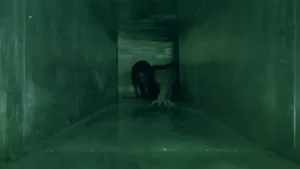
Scene from ‘The Sisters (2004)’ showing a ghost in an air conditioner vent
Photo Cr. timeout
Following the three periods categorized by the book, Asst. Prof. Dr. Sukanya noted that, from 2004 onward, Thai horror films entered the modern era, characterized by reinterpretation and genre-blending. Dr. Thanapol inserted that while traditional legends remain central, filmmakers began offering movie-goers fresh perspectives and narratives of the story. For example, the legend of Mae Nak Phra Khanong was remade in the movie Pee…Mak (2013), presenting the story from the viewpoint of her husband, Mak. This new angle, combined with a comedic twist, gave a fresh feeling to the traditional folklore. Additionally, the incorporation of elements of mystery, detective stories, and even action makes the films in this period more dynamic and engaging. The blend of genres, along with improved storytelling techniques that heightened suspense, kept audiences on the edge of their seats. These innovations didn’t only make the films more thrilling, but also drew in more audiences.

Scene from ‘Pee…Mak (2013)’
Photo Cr. thestandard
From these observations of the four periods of Thai horror movies, we feel that certain traditional ghost stories hold a special place in the hearts of Thai people. Three of the more frequently remade legends are: Mae Nak Phra Khanong, phi pop, and phi krasue. These stories, especially Mae Nak Phra Khanong, have been adapted numerous times with each new version reflecting changing social attitudes and values, advancements in film technology, and creative storytelling, yet they remain rooted in the local folklore, representing Thai-style horrors.
Must-Watch Thai Horror Films
In this section, we have curated a list of 13 must-watch Thai horror films, ranging from timeless classics to modern favorites.
- Ghost of Guts Eater: กระสือสาว (1973)
A cinematic adaptation of the 1968 comic of the same name, Krasue Sao or Ghost of Guts Eater (1973) was the first horror film to center around the krasue legend, inspiring various films and TV shows that continue to explore this iconic ghost to this day. The film revolves around the story of krasue, a female spirit that possesses women. By day, she appears as a normal woman, but at night, her head detaches from her body, with her entrails dangling beneath it as she flies through the dark, searching for raw flesh, blood, and other gross things. Her iconic eerie glow radiating from her guts signifies her presence at night. In this adaptation, the protagonist is a beautiful woman cursed and possessed by the krasue spirit, which previously possessed her grandmother. The film explores her struggles as a krasue trying to escape the suspicions of the villagers, her romantic relationships, and her interactions with both humans and fellow krasue, adding a layer of drama to the horror.
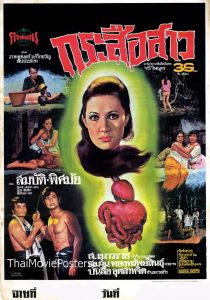
Krasue Sao or Ghost of Guts Eater (1973)
Photo Cr. Pantip
Ghost of Guts Eater was particularly notable for its special effects, especially the iconic transformation scene where the protagonist’s head detaches and flies through the night. While the visual effects may seem dated or even amusing by today’s standards, they were groundbreaking in the 1970s, when cinematic technology was limited, leaving audiences in terror. Despite its age, the film remains a reference point for contemporary Thai horror.
- Baan Phi Pop Franchise: บ้านผีปอบ (1989-2011)
The Baan Phi Pop franchise is one of the most significant phenomena in Thai cinema, with 13 sequels. The franchise began with its first movie in 1989, with the latest version released in 2011. Despite being a low-budget film initially aimed at theaters in the suburban areas or countryside, Baan Phi Pop became an unexpected nationwide success, to the point where even cinemas in Bangkok had to screen the films due to high demand. All movies in the franchise follow phi pop, a demonic spirit devouring human and animal entrails. The plot revolves around the villagers trying to escape it. What set Baan Phi Pop apart from other horror films was its focus on comedic chase scenes, with the villagers coming up with increasingly inventive and absurd ways to evade the spirit. These scenes often resembled slapstick humor found in Western cartoons like Tom and Jerry or Road Runner. Among all 14 movies in the franchise, the second one is particularly significant as it introduces the character of pop yib (ปอบหยิบ), whose comedic yet terrifying portrayal of the phi pop became a symbol of this franchise up until the latest part. Baan Phi Pop is widely loved for its unique blend of horror and humor, reflecting Thai audiences’ love for this genre.
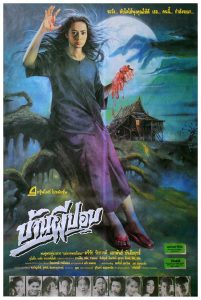
Baan Phi Pop (1989)
Photo Cr. Media Information
- Nang Nak: นางนาก (1999)
Nang Nak (1999) is one of the most iconic and beloved adaptations of the Mae Nak Phra Khanong legend, telling the story of a devoted wife who continues to love and care for her husband, even after her death. This version is known for its realistic portrayal of mid-19th century Thailand, with authentic sets, costumes, and cultural practices, immersing the audiences in the scenes. The film skillfully balances the scary and emotional aspects of the story, portraying Nak’s tragic love for her husband, Mak. The film made history by becoming the first Thai movie to earn over 100 million baht at the box office, which was not easy during the time when movie tickets cost less than 100 baht. Its cultural and historical significance in the Thai film industry was further solidified when it was registered as a national film heritage in 2014.
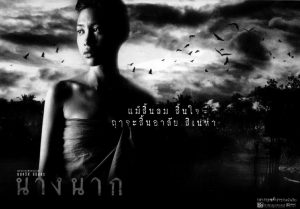
Nang Nak (1999)
Photo Cr. Film Archive
- Shutter: ชัตเตอร์ กดติดวิญญาน (2004)
Shutter (2004) is one of the first Thai horror films to gain significant international recognition. The story follows a photographer, Tun, and his girlfriend, Jane, who one night accidentally hit a woman with their car. Instead of helping her, they flee the scene, a decision that comes back to haunt them—literally. Soon after, Tun begins to see ghostly images of a woman in his photographs, and strange occurrences follow, affecting not only the couple but also those around them. As the tension builds, they realize that no one can escape the consequences of their past actions.
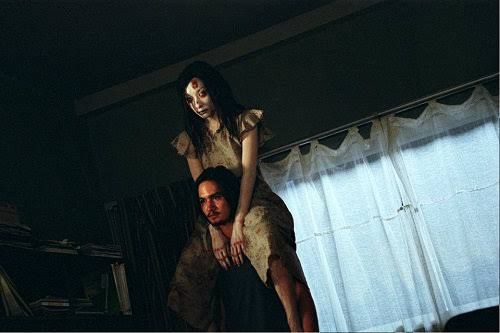
Scene from ‘Shutter (2004)’
Photo Cr. blockdit
The film’s use of photography as a spectral element was innovative at the time, making Shutter stand out from more traditional Thai horror. Its suspenseful plot, haunting cinematography, and chilling atmosphere made the audiences’ flesh creep and brought Thai horror movies which were in the stagnant period to the global stage. Shutter was the highest-grossing film in Thailand in 2004 and earned international acclaim. Its global appeal was so strong that it was remade in English (Shutter in 2008), as well as in India with three adaptations: Photo (Telugu), Sivi (Tamil), and Click (Hindi).
- Art of the Devil Franchise (2004, 2005, 2008)
The Art of the Devil franchise comprises three films, คนเล่นของ (Khon Len Khong) or Art of the Devil (2004), ลองของ (Long Khong) or Art of the Devil 2 (2005) and ลองของ 2 (Long Khong 2) or Art of the Devil 3 (2008). The series is known for its shocking depictions of black magic, betrayal, and vengeance. While each film has its own storyline, the franchise shares a common theme which is the devastating consequences of occult rituals. Unlike traditional ghost stories, Art of the Devil explores the horrors of humans, particularly the lengths people will go to harm others, using supernatural forces in terrifying ways.
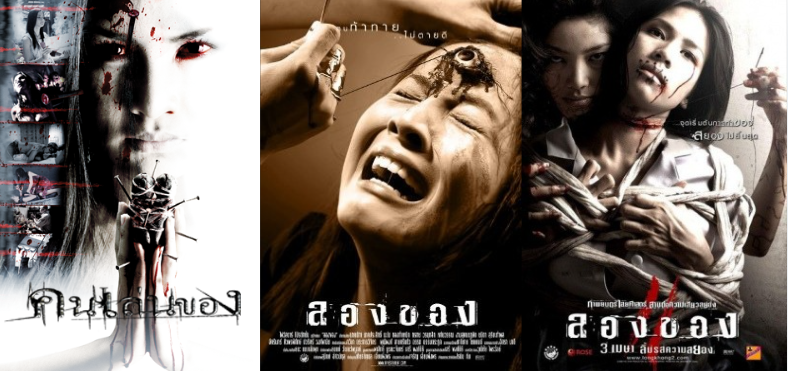
Art of the Devil Franchise (2004, 2005, 2008)
Photo Cr. Wikipedia
Like Baan Phi Pop franchise, the second film in the Art of the Devil franchise is often regarded as the most iconic. This film follows a teacher named Panor, who uses black magic to avenge those who wronged her, subjecting her enemies to graphic, spine-chilling fates. The film’s success earned it the slogan “Horror comes every two minutes” and this acclaim led to the production of the third movie, which walks us through the backstory of Panor, set two years before the events of the previous film. In 2020, a TV series titled Art of the Devil Series was released. The narrative in this series is not related to either of the last two films. Instead, it centers on Praewa, a female member of a university cheerleading group, who was accused of being the person in the leaked video. She suffered from being severely physically abused and put under a life-threatening dark spell. Yet, she survives and transforms into a dark magic user, seeking revenge on those who harmed her. Additionally, it was recently announced that a new installment titled Panor will soon begin filming, continuing the legacy of the franchise and giving another perspective of this chilling story.
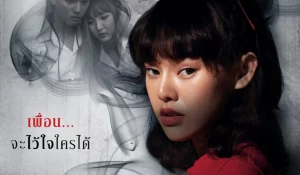
Art of the Devil Series (2020)
Photo Cr. Sanook
The franchise’s unique approach to horror, emphasizing psychological tension and the gruesome consequences of occult practices, has made it renowned among fans of extreme horror. By providing a glimpse into Thai occult rituals, it reflects not only the terrifying outcomes but also the darker side of human nature, making it a great choice for those interested in exploring Thai occult practices through horror films.
- The Unseeable: เปนชู้กับผี (2006)
The Unseeable (2006), literally translated as “Having an Affair with a Ghost”, is a horror film that perfectly incorporates mystery and suspense in the classic “haunted house” theme. Set in 1934 Thailand, the film involves Nualjan, a young pregnant woman who travels to the city in search of her missing husband. She ends up staying at an eerie, old mansion owned by Madame Ranjuan, a beautiful widow. She soon begins experiencing unsettling occurrences and unexplained figures around the mansion. As the supernatural occurrences intensify, Nualjan unearths long-buried horrors tied to both the mansion and her own husband.
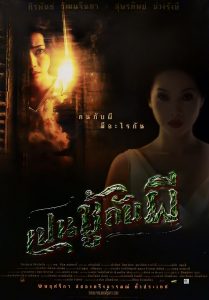
The Unseeable (2006)
Photo Cr. Film Archive
The film is directed by Wisit Sasanatieng, who was also a screenwriter for one of Thailand’s most beloved horrors, Nang Nak (1999). Wisit drew inspiration from the distinctive drawing style of Hem Vejakorn, a renowned Thai illustrator whose graphic ghost novels from the 1930s to 1940s became icons of Thai pop culture. Through the use of light and shadow, the film creates an atmospheric, spine-chilling experience that Thai audiences consider among the most terrifying. The Unseeable also brought Thai-style horrors to audiences in Singapore and Malaysia.

Wisit Sasanatieng
Photo Cr. The Cloud
- Laddaland (2011)
Laddaland (2011) focuses on a family of four — including the father, mother, teenage daughter and young son — who relocate to a housing estate in Chiang Mai called Laddaland. The father, struggling with financial problems and feeling immense pressure as the head of the household, sees the move as a fresh start. However, soon after their arrival, disturbing events begin to unfold. A brutal murder of a domestic worker occurs within the estate, and her body is discovered in one of the houses. From that point on, unexplained phenomena begin haunting the family, leading to escalating fear and tension. Laddaland is particularly impactful because of the mix between psychological and supernatural horror. The film resonates with audiences due to its realistic portrayal of financial struggles, familial tensions, and societal pressure, all while delivering supernatural fear. This creates an unsettling atmosphere that feels both relatable and horrifying, making it one of the most popular modern Thai horror films.
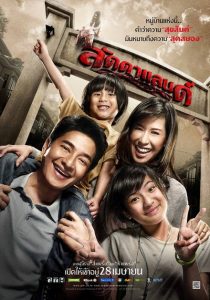
Laddaland (2011)
Photo Cr. Wikipedia
- Pee…Mak: พี่มาก..พระโขนง (2013)
Pee…Mak (2013) is a romantic comedy-horror film based on the legend of Mae Nak Phra Khanong. The story unfolds from the perspective of Mak who is drafted to serve in a war during mid-19th century Thailand, then known as Siam. He is forced to leave his pregnant wife Nak in their hometown, Phra Khanong. After he returns home with four of his soldier friends, the villagers try to warn them about a haunting ghost. As time goes by, the friends begin to suspect that the ghost in question might be none other than Mak’s beloved wife. This film perfectly blends horror, humor, and romance, making it accessible to a broader audience, even those who may be afraid of horror movies. The new perspective on the classic ghost story allowed the film to break box office records and become one of the highest-grossing Thai films of all time. Its success was not limited to Thailand, but also gained international attention, especially in Southeast Asia.

Pee…Mak (2013)
Photo Cr. Wikipedia
- Arpatti: อาปัติ (2015)
Arpatti (2015) is a thought-provoking horror film that explores the darker aspects of monastic life in Thailand with a mix of supernatural horror and moral conflict. It is the story of a rebellious young man who is forced to become a monk as punishment for his misbehavior. He, however, disregards monastic rules and has a secret relationship with a local girl. Because of his misconduct, he soon experiences his own karmic retribution in the form of various spine-chilling supernatural occurrences.
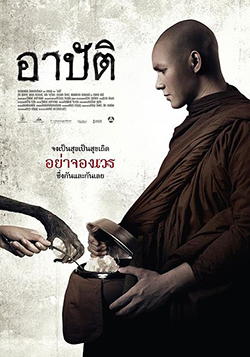
Arpatti (2015
Photo Cr. Wikipedia
The film explores sensitive themes related to Thai Buddhism, including ethical dilemmas and misconduct within the monastic order, which initially led to its ban by censors. However, after re-editing, Arpatti passed without objection and gained critical acclaim. In 2019, it was registered as National Film Heritage, and it was selected to represent Thailand in the Best Foreign Language Film category at the 89th Academy Awards, though it wasn’t nominated. Nevertheless, Arpatti is indeed worth watching as it pushes the boundaries of the horror genre by using the supernatural to explore real-life ethical and spiritual issues while offering a unique portrayal of Buddhist beliefs and karma.
- Haunted Universities Franchise: มหา‘ลัยสยองขวัญ (2019, 2022, 2024)
Every university has its own haunting legends, passed down through generations of students, and the Haunted Universities Franchise brings these terrifying tales to life. Starting with Haunted Universities (2019), followed by Haunted Universities 2nd Semester (2022), and Haunted Universities 3 (2024), the films explore various phi or haunting legends in different universities in Thailand. Each film is structured as a horror anthology, with multiple directors showcasing their version of supernatural occurrences that students experience in these unsettling yet familiar settings. Beyond the ghostly fear, the films also investigate the personal struggles and inner turmoil faced by university students. As they encounter terrifying supernatural phenomena, the characters must also cope with the challenges of adapting to university life, taking on new responsibilities as young adults, and managing relationships. This combination of supernatural horror and relatable student issues makes the franchise a unique and gripping experience for audiences who want to explore Thai urban legend.
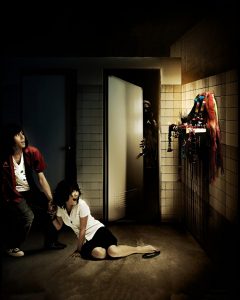
Haunted Universities
Photo Cr. Facebook Page: แฟนพันธุ์แท้ : หนังสยองขวัญ
- The Medium: ร่างทรง (2021)
The Medium is a Thai-Korean supernatural horror filmed in a mockumentary style. The story revolves around the life of a medium, also known as shaman, family in a small village in Isan, the northeastern region of Thailand. The medium position is inherited among females within the family, and the medium is believed to be possessed by a local goddess, Ba Yan. However, one day, things take a dark turn when the medium’s niece, Mink, begins to show strange and disturbing behaviors, revealed to be signs of possession. Mink is suspected to be the next-in-line Ba Yan’s medium, but it soon becomes clear that something far more sinister is taking over Mink.
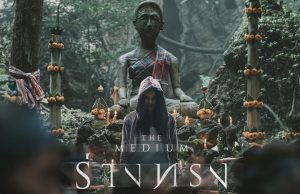
The Medium (2021)
Photo Cr. matichon
The film explores Thailand’s animist and shamanistic traditions, particularly the role of mediums in rural communities. For foreign audiences unfamiliar with these cultural beliefs, the film is an eye-opening introduction to the spiritual beliefs that still influence many parts of Thai society. The film portrays how these ancient beliefs are interwoven with everyday life, providing a unique cultural perspective that adds depth to the horror elements.
- The Undertaker: สัปเหร่อ (2023)
The Undertaker (2023) is the sixth movie of Thibaan the Series (ไทบ้าน เดอะซีรีส์). It revolves around a law school graduate from Bangkok who returns to his hometown in the Isan region to take over his sick father’s role as an undertaker despite being extremely afraid of ghosts. He teams up with a former monk who left the monkhood as he cannot cope with his beloved death and wishes to meet her again even in spirit form. Together, they confront supernatural forces while navigating their own emotional struggles. The film presents the way of life of local people, including undertakers, as well as local supernatural beliefs and rituals related to the dead and the Buddhist principle of letting go. It became a hit after its release from word of mouth and has brought the life of the Isan people into the mass media, offering a fresh perspective in mainstream Thai cinema.
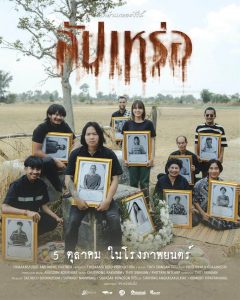
The Undertaker (2023)
Photo Cr. The 101 World
In an era where streaming platforms dominate and theater attendance has dwindled, The Undertaker, a low-budget film, defied expectations by becoming Thailand’s highest-grossing film in nine years. Remarkably, it also secured a spot among the top ten highest-grossing Thai films of all time, standing out as the only one produced by an independent filmmaker. The horrifying elements coupled with some drama and humor captured the hearts of audiences.
- Death Whisperer Franchise: ธี่หยด (2023)
Death Whisperer (2023) has an interesting origin that sets it apart from other Thai horror films. The story first gained popularity as a scary post on the Thai online forum Pantip. The story was later adapted into a novel, which paved the way for the film adaptation. The film is set in 1972 in a remote village in Kanchanaburi, where a young girl dies after hearing the eerie sound of “Thiyod… Thiyod…” at night. The plot follows Yak, whose younger sister, Yam, starts showing strange symptoms after encountering a mysterious woman in black. As Yam’s condition worsens, Yak must do everything in his power — including battling a demonic being that possesses Yam — to save her and protect his family from the creeping terror.
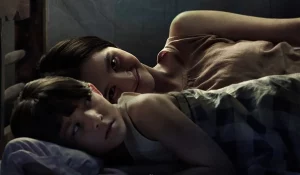
Scene from ‘Death Whisperer (2023)’
Photo Cr. Sanook
The film incorporates action scenes into its horrifying storyline, making it unique in the Thai horror genre and keeping audiences on the edge of their seats as they experience both supernatural terror and intense, fast-paced action scenes. Thanks to its captivating storyline, high-quality production, and intense action, Death Whisperer quickly became the fastest-grossing Thai film of the year. Its success has already led to the release of a sequel, Death Whisperer 2, for horror fans to enjoy.

Death Whisperer 2
Photo Cr. sanook
Interesting Characteristics of Thai Horror Films
Many Thai supernatural horror films share some interesting characteristics. Filmmakers not only draw upon traditional beliefs, but also address pressing societal issues, creating spine-chilling narratives that resonate with audiences.
- Traditional Beliefs and Legends as Inspiration
One of the most distinctive characteristics of Thai horror films is their deep-rooted connection to traditional beliefs and folklore, reflecting the creativity and openness of Thai people. Films based on such familiar legends of phi as Mae Nak Phra Khanong, phi pop, and krasue, illustrate how filmmakers creatively adapt these traditional stories into various versions by adding or removing some elements to create fresh and captivating interpretations. This also highlights the openness of Thai society to embrace diverse beliefs, local or urban alike, as these films often reflect different supernatural traditions across regions of Thailand. By portraying these beliefs in mass media, Thai horror films invite audiences to engage with their cultural roots while exploring new interpretations. Moreover, how the audiences embrace these adaptations allows Thai horrors to constantly evolve and remain “undying,” much like the phi they depict.
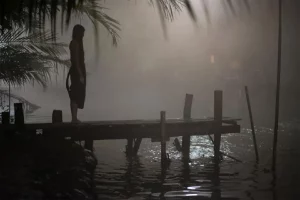
Photo Cr. Post Today
- Horror Films: The Reflection of Real-life Horrors
Many Thai horror films not only portray supernatural and spectral horrors but also serve as a reflection of societal issues, highlighting the struggles faced by individuals and communities. One theme inherently tied to Thai traditional phi legends is gender inequality and the oppression of women in a patriarchal society. Well-known local phi are female spirits who, during their lifetime, suffered unfair treatment and societal pressure to conform to gender norms. For instance, Mae Nak Phra Khanong who suffers from heartache and pain and who eventually passes away during childbirth, and the krasue who often faces suspicion for their nonconformity and is ostracized from society. In modern horror films set in urban contexts, themes of sexual assault and domestic violence frequently surface, with female characters who die from such violence returning as vengeful spirits. As the female phi are free from the restrictions of the mortal world, they seek retribution against the person and oppressive systems that wronged them.
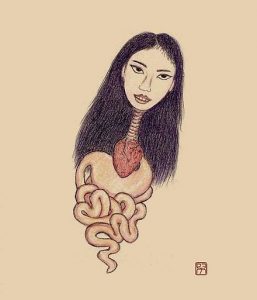
Drawing of Krasue
Photo Cr. Wikipedia
With urbanization, horror film settings have shifted from rural to urban areas. Ghosts no longer limit their hauntings to the night but can now appear even in broad daylight, adapting to city life where artificial light from buildings and streetlamps illuminate the night sky. Films that incorporate modern objects like photography in Shutter or the air conditioner vent in The Sisters (2004) show that vengeful spirits infiltrate everyday objects, making their presence inescapable, just as our wrongdoings are. Hardships commonly found in society are also portrayed on the big screen. Horrifying elements are used as a vehicle to comment on or as a hyper-depiction of real-life issues. For example, in Laddaland (2011), the financial problem seems to be scarier than the ghost of the domestic worker, who, again, is a woman who died violently and unfairly and is seeking revenge. Another example is Dorm (2016) portraying the result of school bullying. By confronting these societal challenges through the lens of horror, filmmakers can engage audiences in critical conversations about the current state of society, while still delivering chilling narratives as entertainment. In turn, audiences can be reminded of the social issues “haunting” their communities or even themselves, urging introspection, empathy, and abstinence from wrongdoings.
Global Resonance: Thai Horror’s International Recognition
Thai horror films have also gained significant international recognition, drawing global audiences with the unique blend of traditional beliefs and socially reflective narratives, as well as the mix between horror and other genres such as romantic comedy, drama, and action. Films like Shutter (2004), Pee…Mak (2013), and The Medium (2021) have achieved both critical acclaim and commercial success outside of Thailand. This international appeal is further upheld by the adaptability of Thai horror films, which are remade in other countries. For instance, Shutter was remade in both Hollywood and Bollywood, and its themes of karma and retribution resonate with audiences across different cultures. As Thai horror films continue to adapt and evolve, they remain a vital, undying part of both Thai cultural identities represented in global cinema.
Conclusion
Thai horror films offer much more than just jump scares — they are a reflection of Thailand’s cultural beliefs and ever-changing society. Phi from the traditional legends to the contemporary ones serve as a powerful tool that creates both spectral and real-life horrors. The films’ unique characteristics of genre-mixing and their ability to blend traditional folklore with the modern world appeal to audiences both domestically and internationally. If you are looking for a genre that is thrilling and thought-provoking, sometimes with a tinge of humor, Thai horror can offer that experience for you. Starting with our compilation of must-watch horror films, you might find yourself hooked on Thai haunting stories before you even realize it!
The story of “Thai horror films” are another interesting aspect of Thai culture and heritage. Deeply rooted in Thai spiritual beliefs, the adaptation of traditional folklore into films demonstrates the creativity and openness of the Thai people. Many films also weave in themes of social change, values, and the everyday struggles faced by ordinary people, making them a unique reflection of Thai society. Join us in exploring more stories of Thailand and the Thai people, as we take you on a journey to discover Thainess.
◊◊◊◊◊
Sources:
- ปิลันลน์, ป., & สามินี, ร. (2016). ภาพยนตร์ผีไทย: ภาพมายาแทนความฝันของผู้ชม. วารสารวิชาการนวัตกรรมสื่อสารสังคม, 4(2), 8–15.
- บวรศักดิ์, ป. (2023, April 7). เปิดความสำคัญ “หนังผีไทย” สู่วงการภาพยนตร์โลก [The Importance of ‘Thai Ghost Films,’ to the World Film Industry]. https://www.silpa-mag.com/on-view/article_105818
- https://thesiamsociety.org/wp-content/uploads/1954/03/JSS_041_2c_PhyaAnumanRajathon_ThePhi.pdf
- https://thailandfoundation.or.th/culture_heritage/ghosts-and-gores-a-critical-interpretation-of-thai-horror-films-and-dramas/
- https://www.thailandnow.in.th/arts-culture/theres-more-to-a-thai-ghost-story-than-being-scary/
- https://www.nationthailand.com/lifestyle/art-culture/40021345
- https://www.mcot.net/view/h7FKloI6
- https://thestandard.co/krasue-films/
- https://www.facebook.com/ThaiFilmArchivePage/posts/2301105249939662/?ref=embed_post
- https://taweewitsanukorn.blogspot.com/2018/12/blog-post.html
- https://www.the101.world/the-undertaker-and-there-is-no-formula/
- https://readthecloud.co/tee-yod2-death-whisperer2/
- https://www.sanook.com/movie/153191/
- https://www.sanook.com/movie/156675/
- https://www.chcom/drama/176309
- https://www.thairath.co.th/entertain/movie/2790149
- https://th.wikipedia.org/wiki/%E0%B8%AD%E0%B8%B2%E0%B8%9B%E0%B8%B1%E0%B8%95%E0%B8%B4
- https://www.bangkokpost.com/thailand/general/1090588/thai-film-apatti-entered-for-an-oscar
- https://www.bangkokbiznews.com/lifestyle/849881
- https://movie.kapook.com/viewhtml
- https://www.fareastfilm.com/eng/archive/2007/the-unseeable/?IDLYT=15535
- https://en.wikipedia.org/wiki/The_Unseeable
- https://movie.kapook.com/viewhtml
- https://en.wikipedia.org/wiki/Art_of_the_Devil
Author: Thanachporn Varapongsittikul
Editor: Tayud Mongkolrat
30 October 2024


